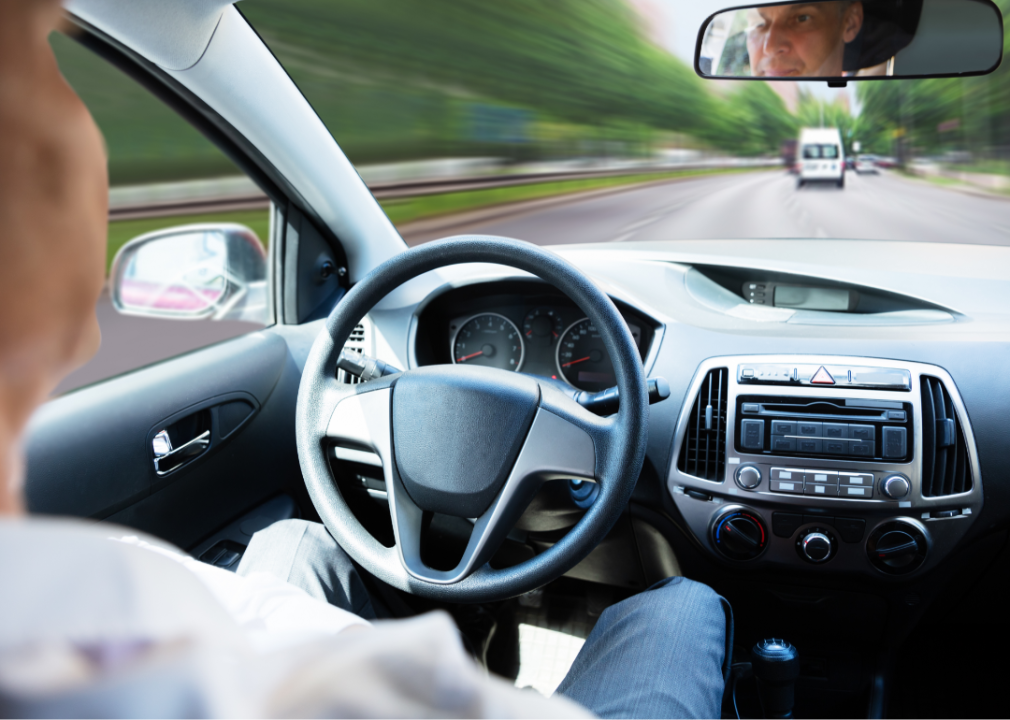Let’s not kid ourselves: Driving is a pain. The myth of the American “open road” has given way to clogged highways, gridlocked intersections, and catawampus parking lots—all occupied by rude and ignorant drivers who pay little, if any, mind to those octagonal red signs on street corners or those colorful red-yellow-green lights hanging overhead.
Commutes, family trips, and even errands might be much more tolerable if you could just get in a car, tell it where you want to go, and doze off or zone out— or, perhaps, safely fiddle around on your smartphone. Automation is on its way to help, and progress is quick, but it will likely be a few years before cars can truly drive themselves.

To measure how far technology has come and how much more road there is to travel, CheapInsurance.com compiled information from engineering organization SAE International to break down the complexities of autonomous vehicle systems.
SAE International, formerly known as the Society of Automotive Engineers, is a global industry group that has developed engineering standards for the transportation industry since the early 1900s. It has formalized a classification of six levels of driving automation, from none at all to a fully automated vehicle. These mirror the six categories used by the U.S. government, which are described by the National Highway Traffic Safety Administration.
Many modern cars have abilities within the first three levels—0, 1, and 2—but far fewer have Level 3. Level 4 vehicles are in early testing phases, and Level 5—the car that will just take you where you’re going, with no effort from you at all—is only in the theoretical stage at the moment.
Read on to see what each level of driving automation involves and whether your car already has those capabilities.
FIND THE CHEAPEST SR-22 CAR INSURANCE
Find the cheapest SR-22 coverage plan that’s reliable, easy to set up, and will help safeguard your driving privileges with proof of financial responsibility.

Level 0
In this level of automation, the human must remain fully in control of the vehicle at all times. SAE calls it “no driving automation,” while the U.S. government calls it “momentary driver assistance.” Level 0 automated systems can warn the driver about nearby hazards, such as vehicles in their blind spots, or when the driver is directing the car to leave its current lane without activating the turn signal. In some Level 0 systems, there is one way an automated process will take control of the vehicle: When the front of the car is about to hit something, sensors will detect the obstacle and activate emergency braking.

Level 1
In this level of automation, called “driver assistance” by both SAE and NHTSA, the driver must remain attentive with hands on the steering wheel and feet on or near the pedals at all times. The car’s system can provide continuous assistance to the driver with either braking or steering.
One example of this help is called “lane keeping assistance,” in which the system uses cameras to determine what lane the car is in, and guides steering to keep the car in that lane as the road curves. Another type of Level 1 help is called “adaptive cruise control,” in which the driver sets a maximum speed and a following distance from the car in front, and the automated system speeds up and slows down to ensure the car stays at that distance without exceeding the maximum speed.

Level 2
SAE calls Level 2 automation “partial driving automation,” while NHTSA calls it “additional assistance.” This is the level at which Chevrolet’s Super Cruise, Tesla’s Autopilot, and most other brands’ automated driving systems operate. The driver must still be actively in control of the car at all times. Level 2 is slightly different from Level 1 because this type of system can assist the driver with both braking and steering at the same time. So instead of the driver choosing adaptive cruise control or lane keeping, these cars can keep themselves a preset distance from the car in front of them and—at the same time—remain centered in the same lane even around curves in the road.
CAR INSURANCE IN THE SUNSHINE STATE
Get a free quote to find the cheapest car insurance in Florida with different levels of coverage today.

Level 3
In Level 3 automation, called “conditional automation” or “conditional driving automation,” the car takes over the driving functions, including acceleration, braking, and steering—but the driver must remain alert and aware because the system could ask for the driver to take over at any moment.
An example of this is called “traffic jam chauffeur,” in which the car can detect slow-moving vehicles ahead and signal the driver to activate the system, which stays in the lane and keeps a safe distance from other cars until the driver takes over, or until the traffic jam ends and the system alerts the driver to take over.
In January 2023, Mercedes became the first automaker to have an SAE-certified Level 3 system operating in the U.S.

Level 4
Level 4, “high automation” or “high driving automation,” is not yet available in cars in the U.S., but Volkswagen is expected to begin testing in 2025 in Germany. These vehicles do not need a human operator, and may not even have a steering wheel, pedals, or other driver controls. However, they are limited to specific geographical areas and may not be able to operate in bad weather or congested traffic conditions.
These systems may require the roads they travel on to be equipped with sensors and communication devices to ensure the cars go where they are supposed to go. Trials of this level of automation have included freight trucking, robotaxis, and self-parking systems. And not all the trials have gone well.
HOW TO GET CHEAP INSURANCE
Find the best super cheap car insurance with a quick, personalized and completely free quote.

Level 5
Level 5 is the “full automation” system that drives you, anywhere, anytime, without any input from you except the destination. These systems can handle any road, any weather condition, and all sorts of traffic, and they get you where you’re going safely.
These systems don’t exist yet, though many research projects aimed at achieving or improving the lower levels of automation may help with Level 5 automation as well. For instance, cameras and other sensors that now detect other vehicles may become able to detect finer features, like potholes. Radios that now connect Level 4 cars to the roads and traffic signals in their designated areas may be able to relay messages about traffic and weather conditions from one car to another.
But it’s likely to be many years before everyone on a road trip is a passenger, free to play travel games, nap, or enjoy the scenery without keeping an eye on the road.
Story editing by Ashleigh Graf. Copy editing by Tim Bruns.


